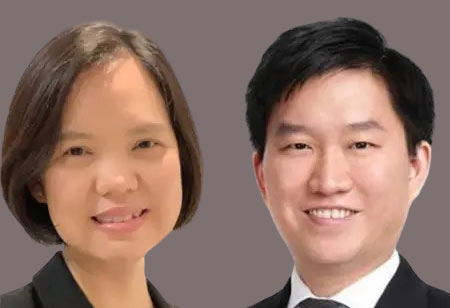Thank you for Subscribing to Healthcare Business Review Weekly Brief

Transforming Point of Care, One Bed at a Time
Healthcare Business Review
Mrs. Mel had fallen and broken her hip.
A few months ago, she had been up and about on her usual routines; A cup of tea in the morning. A quick jaunt through the hustle and bustle of the neighborhood wet market and “tai-ji” class before heading home for a nap. She felt a bit off that day though, and a trip to her Primary Care Physician (PCP) confirmed that she had a touch of pneumonia. Her age at 69 and some mild blood abnormalities made her a candidate for hospitalization, so her PCP packed her off to the nearest facility.
Hospital was a steady stream of strange faces and stranger procedures. Doctors and nurses came and went as did IV lines, phlebotomy, and urinary catheterization. There was no rest to be had at night either; The hospital remained a cacophony of blips and beeps, shuffling footsteps and moans from the demented lady beside her. It was all too much to take in, and she could barely get a wink of sleep. At 3 am in the morning, she decided to get herself a glass of water. She stood up and felt groggy. It might have been the medications, or the innumerable lines tethered to her body; Whatever it was, disoriented and unaccustomed to the hospital environment, Mel fell.
Crucially, nurses, who are inundated with tedious charting and prone to alarm fatigue, reported that PreSAGE® actually helped them with inpatient care.
It shouldn’t have been a bad fall. After all, she’d fallen as many times in her youth. But she wasn’t young anymore, and an elderly patient that falls has a 10 percent chance of inducing a severe injury. Mel was definitely elderly; The fall had broken her hip. The coming months brought an operation which didn't quite restore her mobility, adding confusion, anxiety, excruciating pain, a prolonged stint in bed and lots of struggling to walk with a walking frame. Mel wasn't one of the faint of heart. She had, after all, survived most of the Japanese Occupation, and did odd jobs to support the family during harsh times. So try she did, but an elderly person loses 3 to 5 percent of muscle mass per day of immobility and rehabilitation was an arduous process.
Mel’s story is a common one and hospitals have been tackling this for decades. Falls in hospitals remain a multi-billion-dollar plague, with an innumerable cost in human suffering. The one-year mortality risk of elderly hip fractures is as high as 50 percent. In the USA alone, the estimated cost of fall injuries in the elderly amount to $50 billion annually. In Australia, falls are the most common inpatient adverse event at 38 percent.
Efforts made to address the issue are costly and yield mixed results. Solutions such as pressure or motion sensors have had issues with sensitivity and alarm fatigue. Wearables often get soiled or lost in the wash.
In 2018, Tan Tock Seng Hospital, one of Singapore’s largest multi-disciplinary hospitals, and CoNEX Healthcare Pte Ltd, a Singapore-based medtech company, co-developed an innovative patient monitoring system called PreSAGE®. The system uses thermography, proprietary machine learning and predictive algorithms to predict bed-exit events that triggers advanced warning to facilitate early intervention.
“Instead of looking at fall event themselves, which should be a never-event,” Ms. Tan Swee Yen, CEO and founder behind PreSAGE® recalled, “the idea behind PreSAGE® is to enable clinicians on the ground to have sufficient warning on dangerous events and provide pre-emptive intervention.”
The resulting proof-of-concept study was a success. Involving 80 high fall-risk patients, PreSAGE® accurately predicted 93 episodes of unassisted bed-exits, allowing staff an average of additional 15 seconds buffer over conventional methods, to arrest any potential falls. The predictive capability of the system was tremendous, with a sensitivity of 99.7 percent and a specificity of 100 percent. A subsequent in-vitro assessment of an operational deployment in an actual ward demonstrated a sensitivity of 100 percent and a positive predictive value of 90.8 percent.
Crucially, nurses, who are inundated with tedious charting and prone to alarm fatigue, reported that the system actually helped them with inpatient care. There was a 34 percent reduction in falls rate and a 67 percent saving in manpower hours. Nurses reported a positive experience in a survey conducted post-deployment, including system’s ease of use and perceptions of improved surveillance facilitated by a live monitoring dashboard.
Implementation of a nursing-led solution was bearing fruit and letting nurses get back to clinical work; a common bugbear in the age of E-IMRs and litigious medical environments. The thermal image-based system had a further advantage: while preserving the privacy of the patients, they allowed nurses to demonstrate that the necessary care measures had been taken and empowered nurse clinicians to identify systemic problems before adverse events occurred.
We have just begun to scratch at the potential of how such a platform can gather real time actionable data and free nurses from repetitive tasks and burnout, allowing them to deliver personalized care to their patients.
What does the future hold? Chief Nurse, Dr. Hoi Shu Yin, lets out with a confident grin “It’s all about improving patient care, one step at a time. Nurses are aptly positioned to change practice at point of care, adopting innovative technology for safer and better care.









